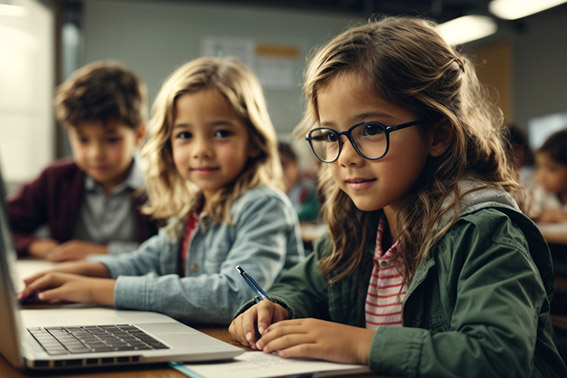
As parents, it is our job to provide the best possible education for our kids. We want them to thrive at school and achieve success in the future. But with so many different learning methods out there, it can be difficult to know which ones are right for your child. That's why we've put together this guide on the new learning methods you should consider for your kids.
1. Utilizing Online Learning Resources
When it comes to finding educational resources for your children, the internet provides a nearly limitless supply of options. And while sifting through all of those options can be daunting, it’s worth it to find the perfect learning tools for your kids.
There are online learning resources available for every subject and every age group. Along with the resources, there are often tutorials, forums, and other material to help you build your kid’s skills in a particular subject, even if it isn’t offered within their current curriculum.
2. Exploring New Multisensory Approaches to Learning
As parents, we can explore different multisensory approaches to learning that are tailored to the individual needs of our children. These approaches use multiple senses during the learning process, such as visual, auditory, and tactile techniques. Using a combination of these methods can help foster better understanding and recall of concepts for our kids.
We could also consider introducing various digital tools that are designed to engage children in learning. Digital tools can include augmented reality, virtual reality, and games that help to make lessons more interactive and engaging.
3. Incorporating Movement into the Learning Process
If your child is having difficulty with a certain subject, it might not be because they're unable to learn the material. They may need to move around and get their body involved in the learning process. Incorporating movement into your child's learning routine can help them better process information, retain information more easily, and understand difficult concepts better. You can do this in a few different ways:
- Get a whiteboard and have your child stand up to do their daily math lesson. They can solve equations by moving their bodies and using the whiteboard as a giant scratch paper.
- Take learning outside! Go on a nature walk and have your child be in charge of finding things that start with the letter L, or practice spelling words by making them out of sticks.
- Incorporate physical activities like dancing, running, and stretching into your child's daily routine while they're learning. It helps the brain to move and get those creative juices flowing!
4. Developing a Flexible and Personalized Curriculum
One size does not fit all when it comes to learning, so parents should consider a more flexible and personalized curriculum for their kids. By working with their child's teachers, they can create a curriculum that better meets their child's needs and interests. This type of curriculum can also be tailored to the learning style of each individual child.
In addition, parents should make sure that their child has plenty of opportunities to explore different subjects and activities. This can help them find their passions and develop their talents. It's also important to encourage kids to be creative and think outside the box. A flexible and personalized curriculum can provide these opportunities while still ensuring that kids are learning all the essential skills they need for success in school and beyond.
5. Practicing Mindful and Social-Emotional Practices
Since children spend much of their time in school, it is essential to teach them how to navigate through difficult experiences in positive ways. Practicing mindfulness and social-emotional practices can help students remain calm, manage stress, and develop resilience which allows them to focus on learning.
Activities like mindful breathing, body scans, gratitude journals, yoga, or gentle stretching are all great ways to introduce mindfulness to children. Social-emotional learning activities such as circle time, where students share their feelings and experiences with their peers in a safe and supportive environment, can also be beneficial.
In the end, there are a variety of new learning methods parents should consider for their kids to thrive at school. From the use of technology-based activities and virtual learning platforms to encouraging play-based and experiential learning, these strategies can help children develop important knowledge and skills that will carry them throughout their lives.
Parental guidance is essential to ensure that children have the resources and guidance they need to master these methods. With proper support, children can develop a strong foundation for school success. Thanks for reading!













